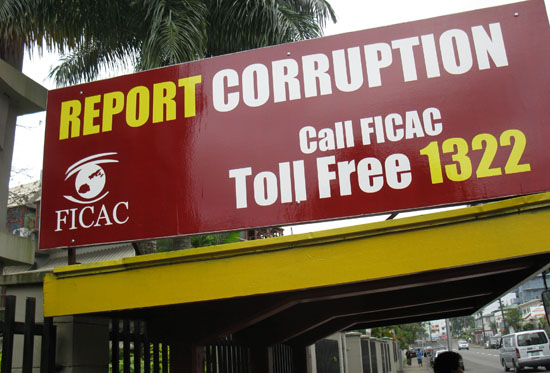
ANALYSIS: Confidence in Fiji will continue to grow if the constitutional process is seen to its logical conclusion through an inclusive and transparent process, writes Professor Biman Prasad in Suva.
Fiji government budgets since 1987 have been prepared in the shadows of political instability and suspicion, coups, and uncertainty of the future.
Even General Elections held under the 1997 Constitution, which was based on power-sharing, failed to fully allay the concerns.
The People’s Coalition’s 2000 budget was implemented against the backdrop of rumours about another coup and continued protests by the ethno-nationalists.
There is no doubt that the last seven budgets since 2006, including the revised 2007 budget, have been prepared against an environment of dominated by fear, mistrust and uncertainty of the future.
In delivering the 2008 budget, the then Interim Finance Minister, Mahendra Pal Chaudhry, blamed the SDL government of mismanaging the economy and claimed that the country was on the verge of bankruptcy.
This may have been an exaggeration, even though the situation wasn’t rosy. Since the 2000 coup political instability continued to be an issue.
Even after the 2001 General Election, investment levels did not increase.
Economic growth
Between 2006 and 2010 the Fiji economy grew by a mere 0.1 percent. In 2011, the growth rate improved to 1.9 percent. The projection for 2012 has already been revised two times: first, it was revised upward to 2.7% and then revised downward to 2.5 percent.
The initial forecast to 2.7 percent was misplaced as it was done soon after the devastating floods in the early part of 2012. The forecasts for 2013 and 2014 make sense but the big unknown is how the political climate will change in 2013 and 2014.
The current constitutional consultations and the preparation of the new Constitution, if followed through, would be positive, especially if plans for 2014 elections are fully transparent and on-track.
This will boost confidence and we may be able to achieve growth rates of more than 2 percent in 2013 and 2014. What is clear from GDP figures in the last 6 years is that almost all productive sector contributions to GDP have declined.
The 2012 budget has had some radical measures and this involved reductions in corporate tax and income tax. In many ways it was a bold budget.
It tried to radically change the fiscal policy environment by providing incentives for consumers to spend more and investors to invest more. In my previous comments on the 2012 budget I had stated that while it is a bold budget, its effectiveness will depend on the level of confidence that will be generated in the economy through steps taken towards democratic elections.
The formation of the Constitutional Commission did help but the skirmishes with the commission and the government because of decrees restricting transparency of the work of the commission may have discredited the process somewhat.
The uncertainty in 2012 as a result of the differing views of the commission and the government may have dampened the spirit of consumers and investors.
It is therefore not surprising that growth rate for 2012 has been revised downwards to 2.5 percent; however, given the poor performance of the productive sectors such as agriculture, sugar and forestry we could end up with a growth rate for 2012 at less than 2 percent.
Key focus
One of the key thrusts of the 2013 budget is the continuation of incentives for investment. However, it must be noted that despite the significant incentives, the overall level of investment remains below 20 percent of GDP. More disconcerting is the persistent low levels of private sector investment.
From as high as 14 percent of GDP in the early 1980s, it has now declined to only 4 percent. The media hype about investment approvals and to some extent selected government propaganda about investment does not reveal the true state of investment levels in Fiji.
The registration and approval of investment proposals does not necessarily imply its implementation. Figures show that over the past few years registered investments have not translated into actual investments.
The reason for poor private sector investment remains mired into poor institutional process. Too much control and inconsistency of policies and incentives have created uncertainty.
While the work of the Commerce Commission is important for addressing prices issues for the vulnerable and poor, it is not necessarily the best way to deal with the impact on poor.
The lack of transparency and the unpredictability of the price control system have created more uncertainty and confusion and have probably increased the cost of doing business in Fiji.
In fact, in 2011, the World Bank’s Ease of Doing Business Survey shows that Fiji’s ranking has gone down and is lower than Samoa and Tonga. Government needs to further concentrate on improving the business environment by applying rules and policies in a transparent and predictable manner.
The 2013 budget is again bold and has built on the direction set by the 2012 budget. I am particularly encouraged by the emphasis of the budget on capital expenditure and a focus on roads.
The deterioration in the infrastructure in the last 25 years has been phenomenal and it has become one of the binding constraints for investment in Fiji apart from the sustained political uncertainty. The infrastructure deficit has to be addressed and the increase in the deficit to 2.8 percent in the 2013 budget to address infrastructure bottlenecks is not necessarily worrisome immediately.
If the spending on roads and other infrastructure is managed well and improved in the next two years, then we would be setting up a very good foundation for growth beyond 2014, especially if promised elections are held.
However, the total debt level has to be scrutinised carefully so that it does not become unsustainable. The present debt level will have to be gradually brought down in the next few years so that there is enough fiscal space to counter any global risks emanating from the global economic slowdown.
There are other positive aspects of the budget where expenditure on health, education, social welfare, pension for those over 70 years is going to have a positive impact on improving the quality of life of people.
The health sector particularly needs urgent attention and we hope that the increase in the budget is used to improve the conditions of the hospitals around Fiji and the services it provides.
The condition at the CWM Hospital for example is depressing. It has filthy toilets and dirty floors, and services at the hospitals are getting worse by the day.
A 70-year-old woman who suffered a stroke was left in the corridors of the CWM hospital in Suva without any care for almost a day. Expenditure allocation therefore alone does not mean that services to the poor are going to improve.
It depends on how the respective ministers, their permanent secretaries and senior civil servants are able to implement and spend funds wisely to improve the services.
In my view the biggest hurdle for the government to achieve better delivery of public services is hampered by ineffective ministers and senior civil servants.
Addressing unemployment and poverty
The biggest cause for concern is the low level of employment generation in Fiji over the last several years. Close to 40 percent of those employed are in the informal sector, where wages are very low.
While the 2013 budget has increased the tax threshold, it is not going to address the concerns of those employed in the informal sector and in some of the lower paid private sectors. The failure of the wages council to address the appropriate wage rise for those workers in those sectors will continue to keep many families in the poverty trap.
The immediate prospect for employment looks bleak. The National Employment Centre (NEC) data shows that since 2010 a total number of 25,801 unemployed persons have registered but only a small number of close to 1,400 have been able to secure full time employment.
One area where government has concentrated recently is to ensure that our unemployed and especially those with skills would be able to find employment in other countries and this is commendable. The recent Melanesian Spearhead Group (MSG) agreement on labour mobility relating to skilled workers may provide some cushion.
Remittances contribute close to about F$300 million to the Fijian economy and this is only second to tourism. Fiji has lost out on seasonal workers scheme in New Zealand as a result of the 2006 coup. One hopes that after the General Election, Fijian unskilled workers would be able to get employment in New Zealand.
To make matters worse for these unemployed and low income categories of families, inflation has been hitting them hard. Between 2006 and 2010 the average inflation rate has been around 5 percent.
In 2008, 2009 and 2010, mainly due to high fuel and food prices and devaluation of the Fiji dollar in 2009, inflation rate was close to 8 percent.
In 2010 and 2011, the inflation rate remained high while it is predicted to be lower in 2012. Government may not be able to keep inflation down through price control as the causes of inflation are either imported or driven by domestic supply and demand conditions and import duties.
For example, the increase in duties on milk products appears to be inconsistent with the overall thrust of the government export-oriented strategy for growth. The high import duty imposed on imports could lead to significant costs to consumers of milk products as more than 80 percent of milk products are imported.
While, it is laudable that government is supporting dairy development in Fiji, it should not do so through high import duties. This is only going to help increase private profits at the expense of the consumers.
The tax free incentive for dairy investment and direct support to farmers should be the approach adopted to develop the industry instead of high import duties on milk products.
It is worrisome that imported milk products for infants will become very expansive and unaffordable to the poor families. Government should re-look at the high import duties on milk products.
Support to productive sectors
The support to the rural agricultural sector makes sense as poverty levels are now higher in the rural areas. The allocations for export promotion in the agriculture sector, new crop extension programme, livestock extension programme, allocations for research programme and drainage programme are welcomed and should be increased in future budgets.
The allocation to the sugar of $13 million is welcome but it is not clear how much of that will go directly to the farmers apart from the $0.5 million for cane replanting programme. The sugar industry will need additional injection and direct support to farmers to bring back the confidence in the industry and keep productive and experienced farmers on the land.
Future prospects
As indicated earlier, the economic growth rates have been less than 1 percent in the last five years. While the projections for 2012-2014 show a growth rate of more than 2 percent, they would not be achieved if the enabling environment for investment through building political certainty and credibility are not improved.
We know that despite the significant financial incentives, private sector investment has remained very poor. This has resulted in high levels of unemployment in the economy. The 2013 budget has some very positive elements like the focus on improving physical infrastructure and supporting productive sectors to improve production and exports.
However, there remain several challenges like reducing the cost of doing business in Fiji through institutional transparency, accountability and good governance.
The government should seriously consider removing some of the decrees and limiting the development of new decrees as these do not promote confidence in the economy. Government should continue with other important structural reforms.
These reforms should continue to ensure that the civil service is productive and effective, introduce further competition in the telecommunications sector and continue to reform the sugar industry.
Confidence in the country will continue to grow if the constitutional process is seen to its logical conclusion through an inclusive and transparent process. This will improve the prospects for further private sector investment and the 2013 budget will lay the foundation for better growth in 2013 and beyond.
Dr Biman Prasad is professor of economics at the University of the South Pacific and the views expressed here are not those of his employer.



